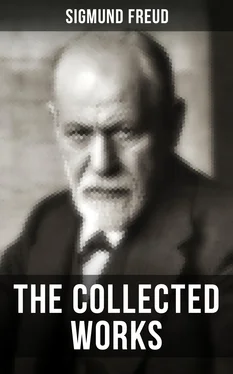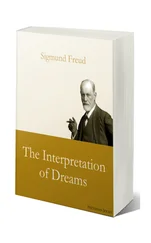Perhaps you will promise to overlook the repulsive character of the censored dream-wishes, and will take refuge in the argument that it is improbable, after all, that so wide a field be given over to the evil in the constitution of man. But does your own experience justify you in saying that? I will not discuss the question of how you may estimate yourselves, but have you found so much good will among your superiors and rivals, so much chivalry among your enemies, so little envy in their company, that you feel yourselves in duty bound to enter a protest against the part played by the evil of egoism in human nature? Are you ignorant of how uncontrolled and undependable the average human being is in all the affairs of sex life? Or do you not know that all the immoralities and excesses of which we dream nightly are crimes committed daily by waking persons? What else does psychoanalysis do here but confirm the old saying of Plato, that the good people are those who content themselves with dreaming what the others, the bad people, really do?
And now turn your attention from the individual case to the great war devastating Europe. Think of the amount of brutality, the cruelty and the lies allowed to spread over the civilized world. Do you really believe that a handful of conscienceless egoists and corruptionists could have succeeded in setting free all these evil spirits, if the millions of followers did not share in the guilt? Do you dare under these circumstances to break a lance for the absence of evil from the psychic constitution of mankind?
You will reproach me with judging the war one-sidedly, you will say that it has also brought forth all that is most beautiful and noble in mankind, its heroic courage, its self-sacrifice, its social feeling. Certainly, but do not at this point allow yourselves to become guilty of the injustice which has so often been perpetrated against psychoanalysis, of reproaching it with denying one thing because it was asserting another. It is not our intention to deny the noble strivings of human nature, nor have we ever done anything to deprecate their value. On the contrary, I show you not only the censored evil dream-wishes, but also the censor which suppresses them and renders them unrecognizable. We dwell on the evil in mankind with greater emphasis only because others deny it, a method whereby the psychic life of mankind does not become better, but merely incomprehensible. When, however, we give up this one-sided ethical estimate, we shall surely be able to find a more accurate formula for the relationship of the evil to the good in human nature.
And thus the matter stands. We need not give up the conclusions to which our labors in dream interpretation lead us even though we must consider those conclusions strange. Perhaps we can approach their understanding later by another path. For the present, let us repeat: dream distortion is a consequence of the censorship practised by accredited tendencies of the ego against those wish-impulses that are in any way shocking, impulses which stir in us nightly during sleep. Why these wish-impulses come just at night, and whence they come — these are questions which will bear considerable investigation.
It would be a mistake, however, to omit to mention, with fitting emphasis, another result of these investigations. The dream wishes which try to disturb our sleep are not known to us, in fact we learn of them first through the dream interpretation. Therefore, they may be described as “at that time” unconscious in the sense above defined. But we can go beyond this and say that they are more than merely “at that time” unconscious. The dreamer to be sure denies their validity, as we have seen in so many cases, even after he has learned of their existence by means of the interpretation. The situation is then repeated which we first encountered in the interpretation of the tongue slip “hiccough” where the toastmaster was outraged and assured us that neither then nor ever before had he been conscious of disrespectful impulse toward his chief. This is repeated with every interpretation of a markedly distorted dream, and for that reason attains a significance for our conception. We are now prepared to conclude that there are processes and tendencies in the psychic life of which one knows nothing at all, has known nothing for some time, might, in fact, perhaps never have known anything. The unconscious thus receives a new meaning for us; the idea of “at present” or “at a specific time” disappears from its conception, for it can also mean permanently unconscious, not merely latent at the time . Obviously we shall have to learn more of this at another session.
TENTH LECTURE
THE DREAM
SYMBOLISM IN THE DREAM
Table of Contents
We have discovered that the distortion of dreams, a disturbing element in our work of understanding them, is the result of a censorious activity which is directed against the unacceptable of the unconscious wish-impulses. But, of course, we have not maintained that censorship is the only factor which is to blame for the dream distortion, and we may actually make the discovery in a further study of the dream that other items play a part in this result. That is, even if the dream censorship were eliminated we might not be in a position to understand the dreams; the actual dream still might not be identical with the latent dream thought.
This other item which makes the dream unintelligible, this new addition to dream distortion, we discover by considering a gap in our technique. I have already admitted that for certain elements of the dream, no associations really occur to the person being analyzed. This does not happen so often as the dreamers maintain; in many cases the association can be forced by persistence. But still there are certain instances in which no association is forthcoming, or if forced does not furnish what we expected. When this happens in the course of a psychoanalytic treatment, then a particular meaning may be attached thereto, with which we have nothing to do here. It also occurs, however, in the interpretation of the dreams of a normal person or in interpreting one’s own dreams. Once a person is convinced that in these cases no amount of forcing of associations will avail, he will finally make the discovery that the unwished-for contingency occurs regularly in certain dream elements, and he will begin to recognize a new order of things there, where at first he believed he had come across a peculiar exception to our technique.
In this way we are tempted to interpret these silent dream elements ourselves, to undertake their translation by the means at hand. The fact that every time we trust to this substitution we obtain a satisfactory meaning is forced upon us; until we resolve upon this decision the dream remains meaningless, its continuity is broken. The accumulation of many similar cases tends to give the necessary certainty to our first timid attempts.
I am expounding all this in rather a schematic manner, but this is permissible for purposes of instruction, and I am not trying to misstate, but only to simplify matters.
In this manner we derive constant translations for a whole series of dream elements just as constant translations are found in our popular dream books for all the things we dream. But do not forget that in our association technique we never discover constant substitutes for the dream elements.
You will say at once that this road to interpretation appears far more uncertain and open to objection than the former methods of free association. But a further fact is to be taken into consideration. After one has gathered a sufficient number of such constant substitutes empirically, he will say that of his own knowledge he should actually have denied that these items of dream interpretation could really be understood without the associations of the dreamer. The facts that force us to recognize their meaning will appear in the second half of our analysis.
Читать дальше












